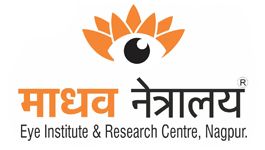Our eye is called as the camera of our human body whereas the cornea would be the glass at the front of the camera lens.
What is Cornea?
The cornea can be defined as the transparent layer forming the front part of the eye. Because the cornea is as smooth and clear as glass but is strong and durable, it helps the eye in two ways that are, it shields the rest of the eye from germs, dust and other harmful matter along with being the protection to the eye with being the companion to eyelids, eye socket, tears, sclera( white part of the eye).
What is a Corneal disease?
The cornea acts as the eye’s outermost lens. It functions like a window that controls and focuses the entry of light into the eye. The cornea contributes between 65-75 percent of the eye’s total focusing power. Therefore any sort of damage to the cornea indirectly affects the vision too due to its beneficial role. Corneal disease is a serious condition that can cause clouding, distortion, scarring and eventually blindness. There are many types of corneal diseases.
Types of Corneal disease-
- Infection: Bacterial, fungal and viral infections prove to be the common causes of corneal damage.
- The cause of keratoconus in most patients is unknown.
- Age: Ageing processes can affect the clarity and health of the cornea.
- Cataract and intraocular lens implant surgery: Bullous keratopathy occurs in a very small percentage of patients following these procedures.
- Heredity
- Contact lenses
- Eye trauma
- Systemic diseases, such as Leber’s congenital amaurosis, Ehlers-Danlos syndrome, Down syndrome, and osteogenesis imperfecta. Symptoms of Corneal disease-
- With keratoconus, as the cornea protrudes or steepens, vision becomes increasingly blurred and contact lens wear, which is often an early treatment for the disease, becomes difficult. The contact lens may not stay on the eye due to the irregular shape of the cornea.
- A person with Fuchs’ endothelial dystrophy or bullous keratopathy may first notice glare with lights at night or in bright sunlight. As these conditions progress, vision may be foggy or blurry in the morning and clear up as the day progresses. As the diseases further progress, vision will stay blurrier later into the day and eventually may not clear at all.
Diagnosis of Corneal disease
Your eye doctor can check for corneal disease and trauma by examining your eyes with magnifying instruments. Using a slit lamp and advanced diagnostic technology such as corneal topography, your doctor can detect early cataracts, corneal scars, and other problems associated with the front structures of the eye. After dilating your eyes, your doctor will also examine your retina for early signs of disease.
Treatment of Corneal disease
In case of any serious eye infection, the corneal disease should be treated immediately. Although corneal transplant is almost always the necessary treatment to restore vision when the cornea becomes clouded, there are other measures that can be taken to prolong vision in the early stages of the disease.
Cornea services are available with us-
- Corneal Transplantation- surgery by which diseased cornea (anterior black part of the eye) of the patient is replaced with a healthy cornea to provide vision in a corneal blind patient
- Lamellar Corneal Transplantation (DSAEK/DALK)- is a specialized technique of corneal transplantation in which only deceased layer of the cornea is replaced instead of the whole cornea
- FALK (Femtosecond Assisted Anterior Lamellar Keratoplasty)- corneal transplantation by femtosecond laser
- Keratoconus Management – all the upgraded facilities of diagnosis and management of keratoconus available like Corneal topography( Oculyzer) and Latest Collagen cross-linking machine
- Corneal Collagen Cross-Linking- Done to treat Keratoconus
- Contact Lens services- All types of Contact lenses available with customization
- Corneal Infection Management- All the facility(including assisted Microbiology lab) available to treat corneal infections
- Pterygium Surgery- sutureless surgery is done with the help of glue
- Mucus membrane Grafting- the latest technique of grafting in cases of Steven Johnson Syndrome
- Amniotic Membrane Grafting- done in cases of chemical injury of the eye
- Dry eye Management- A detailed workup is done and the causative factor is treated accordingly
- Immunological Disorders of the cornea
- Allergic Eye disease
- Ocular surface tumors
- Ocular surface disorders including Stevens Johnson`s Syndrome, Chemical Injuries
- Stem Cell Transplantation (SLET)- available to treat Limbal stem cell deficiency in cases of post chemical injury
- – to visually rehabilitate the patients with both eye blind having visual potential
Facilities and Diagnostic Services
- Corneal Topography (Oculyzer II, Topolyzer) – used for diagnosing keratoconus, contact lens fitting, LASIK work up
- Specular Microscope- to evaluate the posterior layer of the cornea
- Contact Lens services- All types of Contact lenses available with customization
- Anterior Segment Digital Photography – to capture the images of the cornea and anterior segment
- Anterior Segment OCT- to evaluate the pathology of the cornea and anterior segment in detail
- Pachymetry- to measure the thickness of the cornea
- Lab Facility for Microbiological Diagnosis- to diagnose the various infectious corneal disorder

